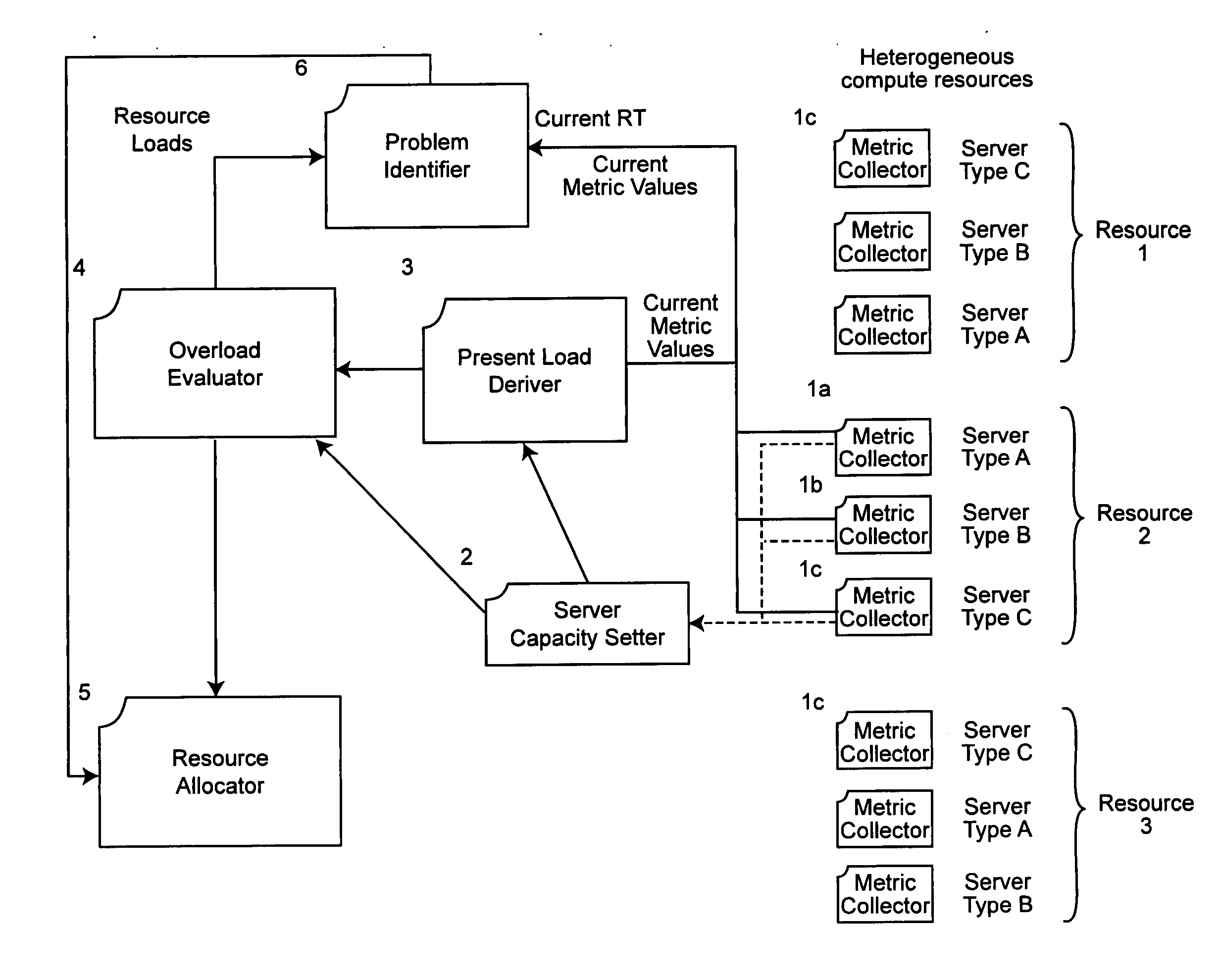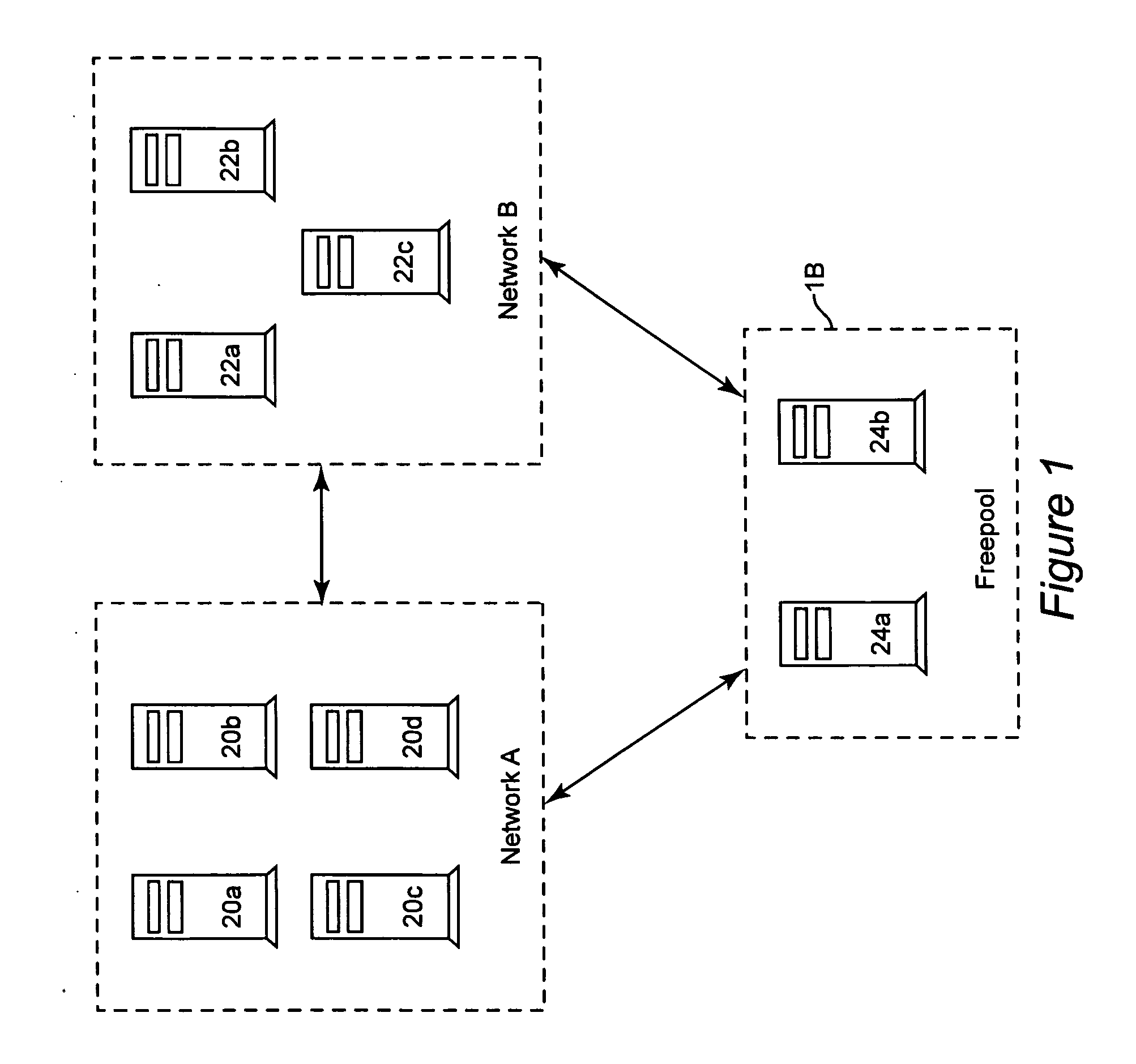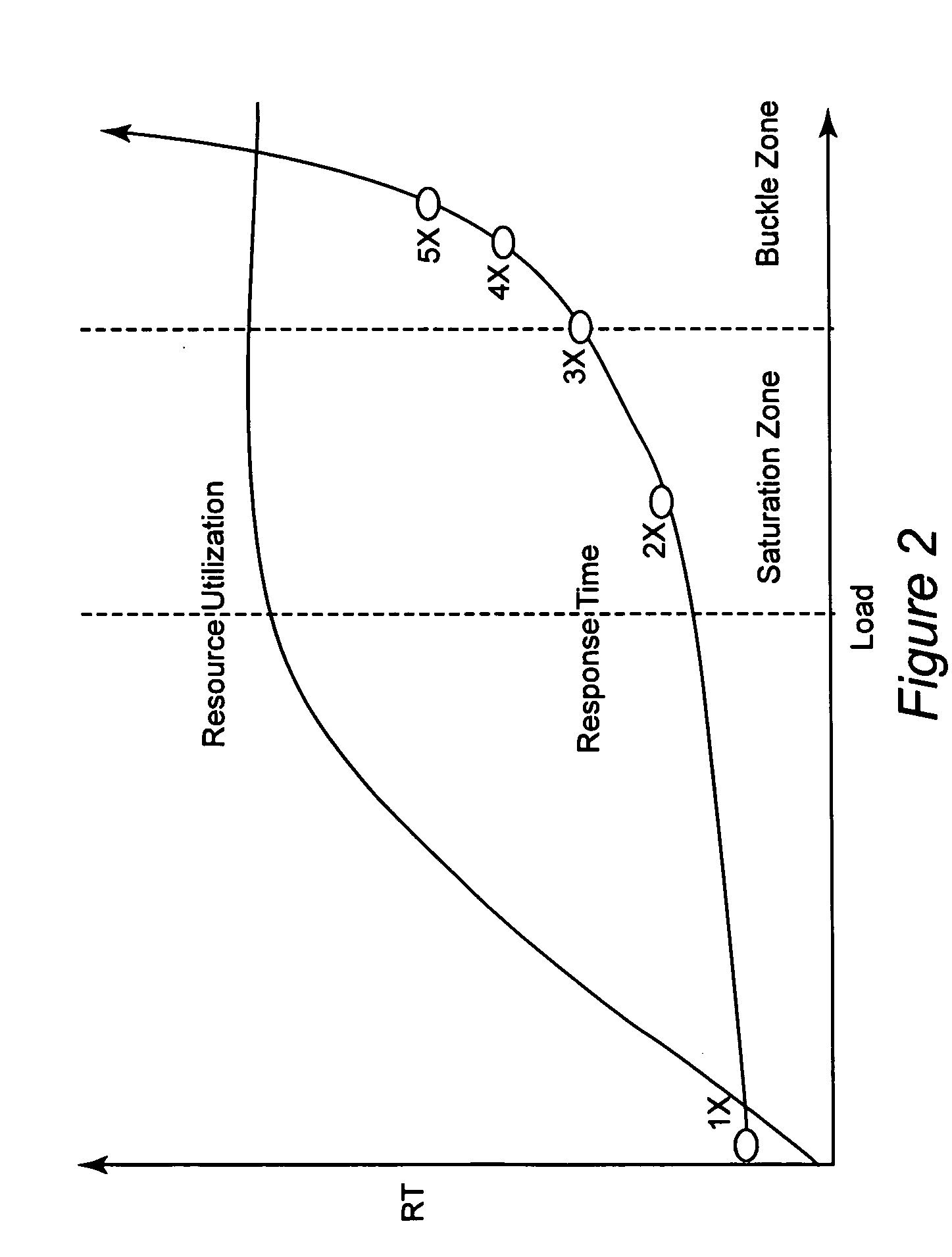Method and system for dynamically allocating servers to compute-resources using capacity thresholds
a technology of capacity thresholds and servers, applied in the field of computer resources, can solve the problems of few systems that support dynamic allocation of servers, no automated effective and efficient methods for determining, and few central processor units (cpus)
- Summary
- Abstract
- Description
- Claims
- Application Information
AI Technical Summary
Benefits of technology
Problems solved by technology
Method used
Image
Examples
Embodiment Construction
[0014] The present invention provides a method for computing the maximum load on a compute-resource and for allocating resources among a plurality of compute-resources in a manner that prevents each compute-resource's maximum from being exceeded. More specifically, this invention embodies a method to derive a Maximum-Load Vector for each compute resource and to build allocation threshold equations based on the computed current and maximum load.
[0015] As an illustrative example we will show how these thresholds can be used to drive server allocations in a hosted environment. Servers, or more generically resources, are allocated according to the load on each compute-resource. In the example environment, each server is assigned to one compute-resource or to a free-pool. Servers assigned to a compute-resource are used for functions specific to the compute-resource (e.g., each compute-resource can be used for a particular website, used for a particular application, or used for a particu...
PUM
 Login to View More
Login to View More Abstract
Description
Claims
Application Information
 Login to View More
Login to View More - R&D
- Intellectual Property
- Life Sciences
- Materials
- Tech Scout
- Unparalleled Data Quality
- Higher Quality Content
- 60% Fewer Hallucinations
Browse by: Latest US Patents, China's latest patents, Technical Efficacy Thesaurus, Application Domain, Technology Topic, Popular Technical Reports.
© 2025 PatSnap. All rights reserved.Legal|Privacy policy|Modern Slavery Act Transparency Statement|Sitemap|About US| Contact US: help@patsnap.com



